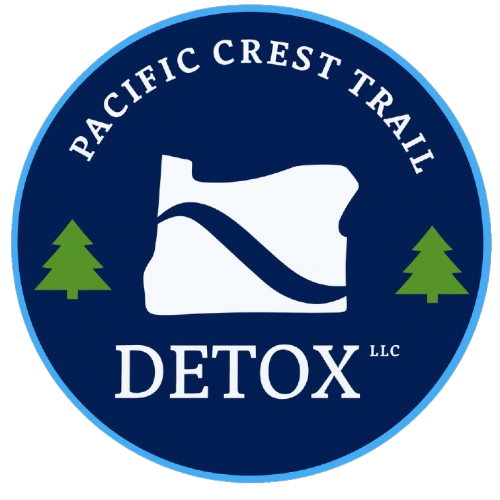
As we look at look at addiction through the lens of the classic disease model, one thing has stood for certain, and that is that success of the addict’s recovery solely depends on them becoming abstinent and staying abstinent through all phases of treatment. Altogether, there are four phases of recovery; “detoxification, initial abstinence, long-term abstinence, and continuous recovery.” (Inaba/Cohen) It’s through these basic ideas in which the addict in recovery can map out a clear path to recovery, with treatment continuum. As we can see from the four phases of recovery, the very first step involves detoxification.
Like with most local Portland detox clinics, at Pacific Crest Trail Detox, the first step in getting the client into detox is to get the client to stop using or drinking. This is because it’s a proven fact that “a user’s biochemistry is so unbalanced that only abstinence gives the body time to metabolize the drug and to normalize the brain’s neurochemical balance.” (Inaba/Cohen) This, in turn, allows the detoxification process to allow the client to heal both in a physical sense and a mental sense, helping the client’s thinking process to regulate.
Treatment Continuum and Detoxification
The detoxification period, of course, varies from substance to substance, as well as from person to person. For instance, stimulants such as cocaine use can involve a week-long process to completely expend from the body, resulting in another 4 weeks to 10 months for the actual body chemistry to settle down. (Inaba/Cohen) Couple that with drugs such as benzodiazepines that often time can take much longer to excrete from the body, each detox period is different as well as each detox client.
However, that does not mean that each detox itself is unique. Clinically, depending on the substance, each detox must be unique. The process of assessing each client is a crucial step into “determining the need for medical detoxification.” (Inaba/Cohen). This often times includes the level of intoxication and the potential symptoms of acute withdrawal. Furthermore, the client will need to be assessed for any additional medical or psychological problems. These will all align with the client’s response to the recommendation of treatment, as well as what their current environment for treatment looks like (i.e. the safety of their current living situation.)
Assessing Treatment Continuum Detox
When it comes to assessments, there are several different scales. For instance, if the client abuses opiates, the Clinical Opiate Withdrawal Scale (COWS) will be vital. This will evaluate the client’s severity of opioid withdrawal symptoms (Inaba/Cohen). When it comes to a practical assessment of a client’s detox needs, the Modified Selective Severity Assessment (MSSA) Detoxification Scoring becomes extremely useful. This assesses withdrawal symptoms in a much more broader sense and becomes especially useful when it pertains to polydrug abusers. While these can be done in a detox center, major medical issues call for detox in a hospital setting.
Viewing detox in the treatment continuum model is crucial to the treatment of dependence and withdrawal symptoms. When we come to understand Portland area detox programs, we have to avoid the “revolving door” tactic; meaning getting a client in and out as fast as possible with no clear and concise plan. The recovery phase begins with detox, but it certainly does not end there. At Pacific Crest Trail Detox, we understand that beginning the recovery process on a solid and strong ground is important to create long-lasting success for each and every one of our clients.
-J. Dalton Williams
References:
Inaba, Darryl S. Cohen, William E. Uppers, Downers, All Arounders: Physical and Mental Effects of Psychoactive Drugs. 8th ed. CNS Productions, INC. 2014.
